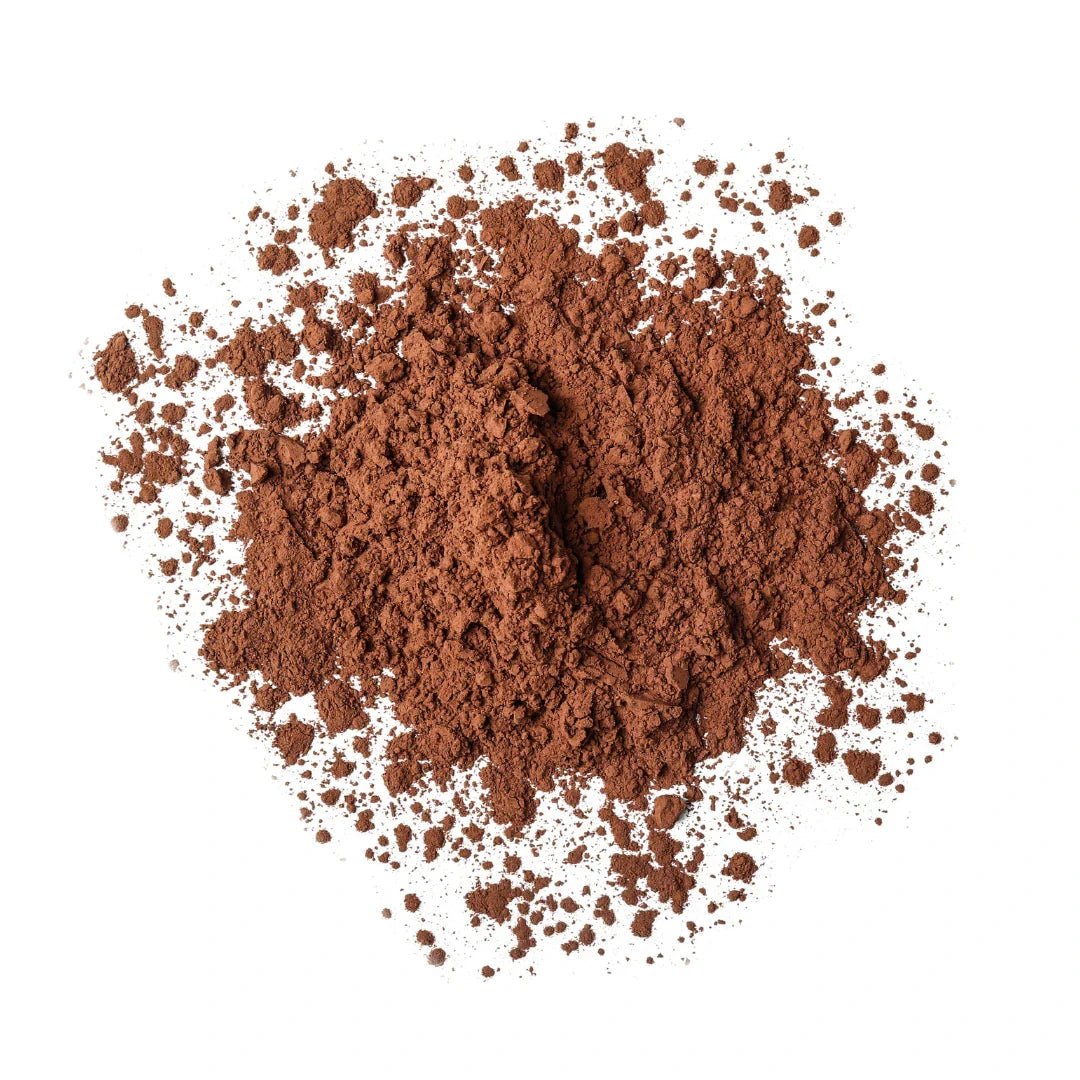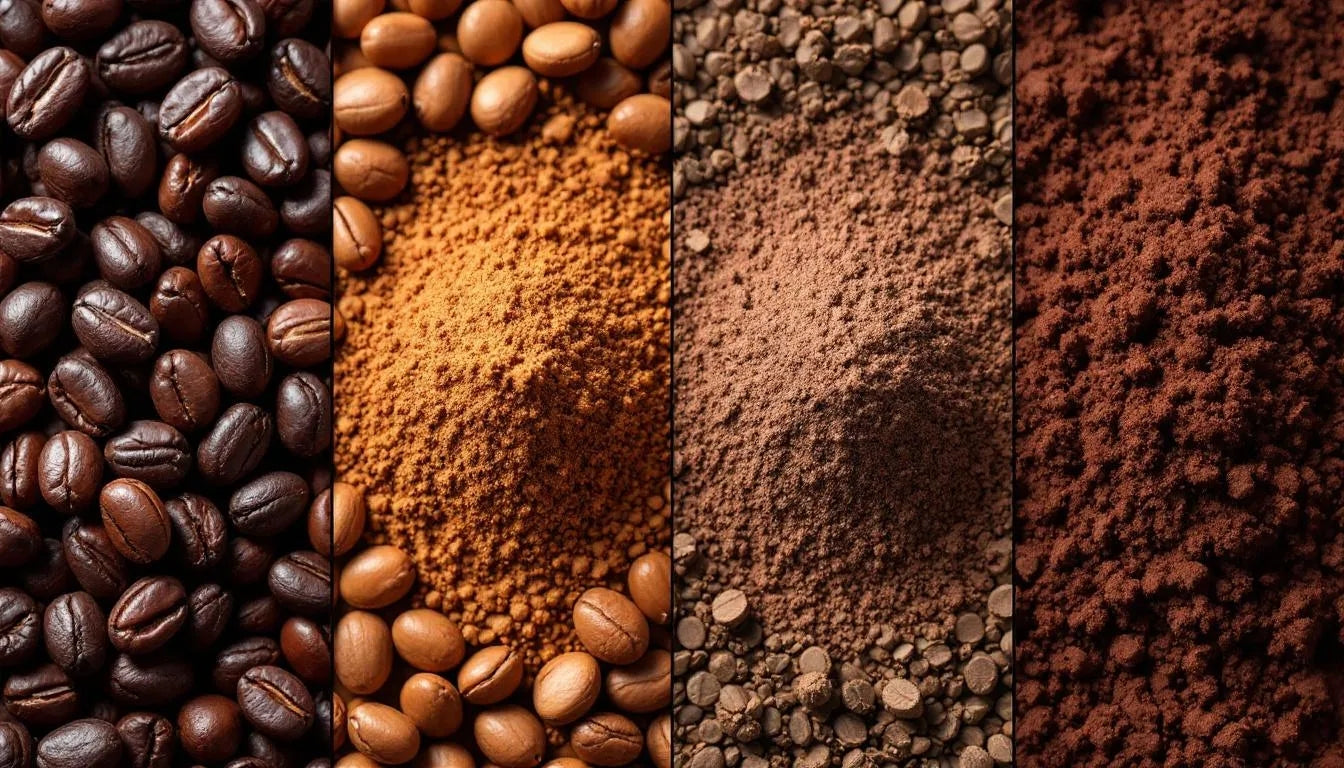
Is Cacao Powder Gluten Free? Everything You Need to Know
If you're following a gluten-free diet, you'll be delighted to know that pure cacao powder is naturally 100% gluten-free. Cacao comes from the seeds of the Theobroma cacao tree and contains no wheat, barley, rye, or other gluten-containing grains. However, cross-contamination during processing can be a concern, making it essential to choose certified gluten-free cacao powder from trusted sources. Let's explore everything you need to know about enjoying cacao powder safely on a gluten-free diet.
Why Cacao Powder is Naturally Gluten-Free
Understanding Cacao's Pure Origins
Cacao powder comes from cacao beans, which are the seeds inside cacao pods that grow on trees native to Central and South America. The process of creating cacao powder involves:
- Harvesting cacao pods from trees
- Fermenting and drying the extracted beans
- Cold-pressing to remove cacao butter
- Grinding the remaining solids into fine powder
At no point in this natural process are gluten-containing grains involved. Our organic cacao powder follows traditional methods that maintain the pure, single-ingredient nature of this ancient superfood.
The Science Behind Gluten-Free Cacao
Gluten is a protein found specifically in:
- Wheat (including varieties like spelt, kamut, farro, durum)
- Barley
- Rye
- Triticale (wheat-rye hybrid)
Since cacao is a completely different botanical family (Malvaceae) from these grains (Poaceae), it naturally contains zero gluten proteins. The benefits of cacao powder come from its natural compounds like flavonoids, minerals, and antioxidants – not from any grain-derived proteins.

Potential Cross-Contamination Concerns
Processing Facility Risks
While cacao powder is inherently gluten-free, cross-contamination can occur during:
Shared Processing Equipment: Facilities that process both cacao and gluten-containing products Transportation: Shared shipping containers or storage facilities Packaging: Equipment used for both gluten-free and gluten-containing products Storage: Warehouses that store various food products together
How to Identify Safe Cacao Powder
Look for these certifications and labels:
- "Certified Gluten-Free" by recognized organizations
- "Processed in a dedicated gluten-free facility"
- "Single-ingredient" product listings
- Organic certification (often indicates cleaner processing)
Our commitment to purity includes sourcing from dedicated facilities that prioritize clean processing and contamination prevention, ensuring our cacao powder remains safe for those with celiac disease and gluten sensitivity.
Reading Labels: What to Look For
Red Flag Ingredients and Statements
Avoid cacao powder that contains:
- "May contain wheat" warnings
- Added flavorings or stabilizers
- "Processed in a facility that also processes wheat"
- Multiple ingredients beyond pure cacao
Safe Label Indicators
Choose products with:
- Single ingredient: "Organic Cacao Powder" or "Raw Cacao Powder"
- Gluten-free certification symbols
- Clear facility contamination statements
- Organic certification from reputable organizations
Understanding what is in your cacao powder helps ensure you're getting a pure, safe product that aligns with your dietary needs.
Gluten-Free Benefits of Choosing Quality Cacao Powder
Nutritional Advantages for Gluten-Free Diets
Many people following gluten-free diets can miss out on certain nutrients found in fortified grain products. Raw cacao powder benefits help fill these nutritional gaps:
Essential Minerals:
- Magnesium: Often deficient in gluten-free diets
- Iron: Crucial for those avoiding fortified wheat products
- Potassium: Supports heart health and muscle function
- Calcium: Important for bone health
Antioxidant Power: Cacao powder's antioxidant content exceeds many other foods, providing anti-inflammatory support that may benefit those with autoimmune conditions.
Mood and Energy Support
Natural Mood Enhancement: Cacao contains compounds like phenylethylamine and anandamide that support emotional well-being – particularly beneficial for those managing the stress of dietary restrictions.
Gentle Energy: Cacao powder's caffeine content provides sustained energy without relying on gluten-containing energy sources.
Delicious Gluten-Free Recipes with Cacao Powder
Breakfast Options
Gluten-Free Cacao Overnight Oats
- 1/2 cup certified gluten-free oats
- 2 tablespoons organic cacao powder
- 1 tablespoon maple syrup
- 1/2 cup almond milk
- Top with berries and nuts
Cacao Protein Smoothie
- 1 banana
- 2 tablespoons cacao powder
- 1 scoop gluten-free protein powder
- 1 cup coconut milk
- 1 tablespoon almond butter
Healthy Treats
No-Bake Cacao Energy Balls
- 1 cup Medjool dates (pitted)
- 1/4 cup premium cacao powder
- 1/2 cup almonds
- 2 tablespoons coconut oil
- Pinch of sea salt
Gluten-Free Cacao Muffins
- 2 cups almond flour
- 1/4 cup cacao powder
- 1/3 cup coconut sugar
- 1/2 teaspoon baking soda
- 2 eggs
- 1/4 cup coconut oil

Warm Beverages
Classic Gluten-Free Hot Chocolate
- 2 cups plant-based milk
- 3 tablespoons cacao powder
- 2 tablespoons coconut sugar
- 1/2 teaspoon vanilla extract
- Pinch of cinnamon
Learn how to make the perfect hot chocolate with cacao powder for detailed preparation techniques.
Coração's Commitment to Gluten-Free Safety
Our Processing Standards
Our organic cacao powder meets the highest standards for gluten-free safety:
Single-Origin Sourcing: Direct from Peru's Huallaga Valley, eliminating multiple processing points Dedicated Equipment: Our partners use equipment dedicated to cacao processing only Third-Party Testing: Regular verification of gluten-free status Transparent Labeling: Clear ingredient lists and facility information
Quality Assurance Process
Bean to Powder Tracking: We monitor our cacao from harvest through final packaging Facility Audits: Regular inspections of processing facilities Batch Testing: Each lot verified for purity and safety Customer Support: Direct access to sourcing and processing information
Celiac Disease and Gluten Sensitivity Considerations
Understanding Safe Thresholds
FDA Gluten-Free Standard: Products must contain less than 20 parts per million (ppm) of gluten Celiac-Safe Levels: Most people with celiac disease can safely consume products under 20 ppm Highly Sensitive Individuals: Some may need products under 10 ppm or from dedicated facilities
Health Benefits for Autoimmune Conditions
Anti-Inflammatory Properties: Cacao's flavonoids may help reduce inflammation associated with autoimmune conditions Gut Health Support: Antioxidants support overall digestive health Nutrient Density: Helps ensure adequate nutrition on restricted diets
Shopping Guide: Choosing the Best Gluten-Free Cacao Powder
Questions to Ask Brands
- Is your cacao powder processed in a dedicated gluten-free facility?
- Do you test each batch for gluten contamination?
- What is your gluten threshold for "gluten-free" products?
- Can you provide documentation of gluten-free certification?
Warning Signs to Avoid
Vague Language: "Naturally gluten-free" without testing verification Shared Facility Warnings: "May contain" statements for wheat/gluten Added Ingredients: Flavorings or stabilizers that could contain gluten Unclear Sourcing: Multiple origins or processing locations
Premium Quality Indicators
Organic Certification: Often indicates cleaner processing Single Origin: Reduces contamination risk points Raw Processing: Minimal handling and processing steps Third-Party Verification: Independent gluten-free certification
Comparing Cacao Powder to Other Gluten-Free Chocolate Options
Cacao Powder vs. Cocoa Powder
Understanding the difference between cacao and cocoa powder is crucial for gluten-free consumers:
Raw Cacao Powder:
- Naturally gluten-free
- Minimal processing reduces contamination risk
- Higher nutritional value
- Often single-ingredient
Processed Cocoa Powder:
- May have higher contamination risk
- More processing steps
- Possible additives
- Requires careful label reading
Cacao Powder vs. Chocolate Products
Pure Cacao Powder Advantages:
- Single ingredient = easier verification
- No added emulsifiers or stabilizers
- Direct from source processing
- Maximum nutritional benefits
Packaged Chocolate Concerns:
- Multiple ingredients increase risk
- Shared manufacturing lines
- Added flavorings may contain gluten
- Complex supply chains
Storage and Handling for Gluten-Free Households
Preventing Cross-Contamination at Home
Dedicated Storage: Keep gluten-free cacao powder in sealed containers Clean Preparation: Use separate utensils and measuring tools Kitchen Organization: Store away from gluten-containing products Family Education: Ensure household members understand cross-contamination risks
Maximizing Freshness and Safety
Airtight Containers: Prevent moisture and contamination Cool, Dry Storage: Maintains quality and prevents mold Label Clearly: Mark containers as gluten-free First In, First Out: Use older products first to ensure freshness
Frequently Asked Questions
Is all cacao powder gluten-free?
Pure cacao powder is naturally gluten-free, but cross-contamination can occur during processing. Our organic cacao powder is processed in dedicated facilities to prevent contamination, making it safe for those with celiac disease and gluten sensitivity.
Can people with celiac disease safely consume cacao powder?
Yes, when choosing certified gluten-free cacao powder from reputable sources. Look for products tested to contain less than 20 ppm of gluten and processed in dedicated gluten-free facilities. Our commitment to purity ensures our cacao powder meets these strict standards.
What's the difference between "naturally gluten-free" and "certified gluten-free" cacao powder?
"Naturally gluten-free" means the ingredient doesn't inherently contain gluten, while "certified gluten-free" indicates testing and verification that the final product contains less than 20 ppm of gluten. For maximum safety, choose certified gluten-free options, especially if you have celiac disease.
Are there any cacao powder brands that aren't gluten-free?
While pure cacao powder is naturally gluten-free, some brands may have cross-contamination from shared processing facilities. Always check labels for "may contain wheat" warnings and choose brands that specifically state they're processed in gluten-free facilities.
Can I use cacao powder in gluten-free baking?
Absolutely! Cacao powder is an excellent ingredient for gluten-free baking, adding rich chocolate flavor and nutritional benefits. It works well in combination with gluten-free flours like almond, coconut, or rice flour.
How much cacao powder is safe to consume daily on a gluten-free diet?
Most healthy adults can safely consume 3-6 tablespoons of cacao powder daily. Understanding cacao powder's benefits helps you optimize your intake for both nutrition and enjoyment while maintaining your gluten-free lifestyle.
Quick Safety Guide (Featured Snippet Optimized)
Yes, pure cacao powder is naturally gluten-free as it comes from cacao beans, not grains. However, cross-contamination can occur during processing. Choose certified gluten-free cacao powder processed in dedicated facilities. Look for single-ingredient products with gluten-free certification symbols. Avoid products with "may contain wheat" warnings.
Enjoy Cacao Powder Confidently on Your Gluten-Free Journey
Pure cacao powder opens up a world of delicious, nutritious possibilities for those following gluten-free diets. Our organic, single-origin cacao powder provides the safety, quality, and flavor you need to enjoy chocolate in all its forms while maintaining your dietary requirements.
From morning smoothies to evening hot chocolate, cacao powder can become a cornerstone of your gluten-free lifestyle. Explore our complete collection of pure, ethically-sourced cacao products to discover new ways to incorporate this ancient superfood into your daily routine.
Learn more about maximizing cacao's benefits through our comprehensive blog, where we share recipes, preparation techniques, and the latest research on this remarkable ingredient. From understanding different cacao varieties to mastering gluten-free chocolate creations, we're here to support your journey toward delicious, safe, and nutritious chocolate experiences.

Claire Bennett
I'm Claire, a chocolate lover and artisan based in a small town where I run a tiny home kitchen dedicated to exploring everything chocolate. From single-origin dark bars to creamy ganache and handmade truffles, I find joy in working with all types of chocolate. I believe chocolate has a story, and I love bringing that story to life through humble, heartfelt creations.



Leave a comment
This site is protected by hCaptcha and the hCaptcha Privacy Policy and Terms of Service apply.